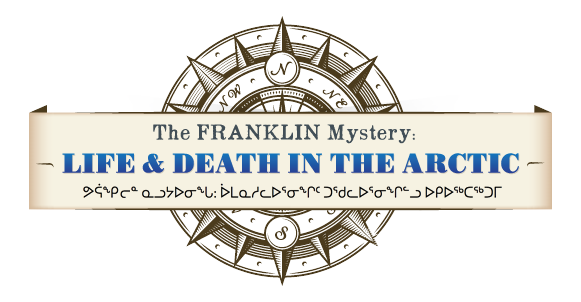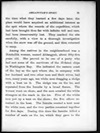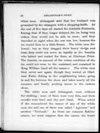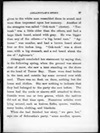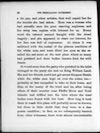Ahlangyah tells Schwatka of seeing Franklin's men alive and dead (1882)
Among the natives in the neighbourhood was a Netchellik woman, named Ahlangyah, about fifty-five years old. She proved to be one of a party who had met some of the survivors of the ill-fated ships in Washington Bay. She indicated the eastern coast of the bay as the spot where she, in company with her husband and two other men and their wives, had seen, many years ago, ten white men dragging a sledge with a boat on it. The sledge was on the ice, and separated from the Innuits by a broad fissure. The women went on shore, and the men awaited the white strangers at the crack in the ice. Five of the white men put up a tent on the shore ; the five others remained in the boat. The Innuits erected a tent near the white men, and the two parties remained together for five days. During this time the Innuits killed a number of seals on the ice, which they gave to the white men. Ahlangyah said that her husband was presented by the strangers with a chopping-knife. At the end of five days all started for Adelaide Peninsula, fearing that, if they longer delayed, the ice being very rotten, they would not be able to cross ; and they travelled at night when the sun was low, because the ice would then be a little frozen. The white men followed : but as they dragged their heavy sledge and boat, they could not move as rapidly as the Innuits, who halted and waited for them at Gladman Point. The Innuits, on account of the rotten condition of the ice, could not cross to the mainland, and remained in King William Land all the summer. The white men they never saw again, though they waited at Gladman Point, fishing in the neighbouring lakes, going to and fro between the shore and lakes nearly all the summer, and finally pushing across to the eastern shore.
The white men, said Ahlangyah, were without fur clothing ; some of them were very thin, and their mouths were hard and dry and black. When asked if she remembered the names of any of the white men, she said one of them was called "Agloocar" and another "Toolooah." As these are common Eskimo names, we must suppose that the names she heard given to the white men resembled them in sound, and were thus impressed upon her memory. Another of the strangers was called "Ook-took " (doctor). "Too-looah" was a little older than the others, and had a large black beard, mixed with gray. He was bigger than any of the others — "a big, broad man." "Agloocar" was smaller, and had a brown beard about four or five inches long. "Ook-took" was a short man, with a big stomach, and a red beard about the size of "Agloocars."
Ahlangyah concluded her statement by saying that, in the following spring, when the ground was almost clear of snow, she saw a tent standing on the shore at the head of Terror Bay. There were dead bodies in the tent, and outside lay some covered over with sand. There was no flesh on them, nothing but the bones and clothes. She saw nothing to indicate that they had belonged to the party she met before. The bones had the cords or sinews still attached to them. Outside were one or two graves, which the natives did not at that time open. Numerous articles were lying around, such as knives, forks, spoons, watches, many books, clothing, and blankets.
When she had finished her story, "we gave her," says one of Schwatka's party,"some needles, spoons, a tin pan, and other articles, that well repaid her for the trouble she had taken. Here was a woman who had actually seen the poor, starving explorers, and her story was replete with interest for us. Every word she uttered seemed fraught with the dread tragedy ; and she appeared to share our interest, for her face was full of expression. At times it was saddened with the recital of the piteous condition of the white men, and tears filled her eyes as she recalled the sad scene at the tent place where so many had perished and their bodies become food for wild beasts.
It would seem that the party who perished in the inlet belonged to the party she met on King William Land. She and her friends could not get across Simpson Strait, while the white men kept on over the rotten ice — probably at last compelled to take to their boats, and then, at the mercy of the wind and ice, after losing others of their number near Pfeffer River and Todd Islands, had drifted into the inlet where the dead bodies were found with the boat. How long it took them to reach this place will probably never be known, but there is little doubt that they were in a desperate condition ; in fact, as we subsequently learned from other witnesses, there were almost unmistakable evidences of their having been compelled to resort to cannibalism, until at last they absolutely starved to death at this point. At least all but one, whose remains were found, during the summer after our visit here, about five miles further inland."

